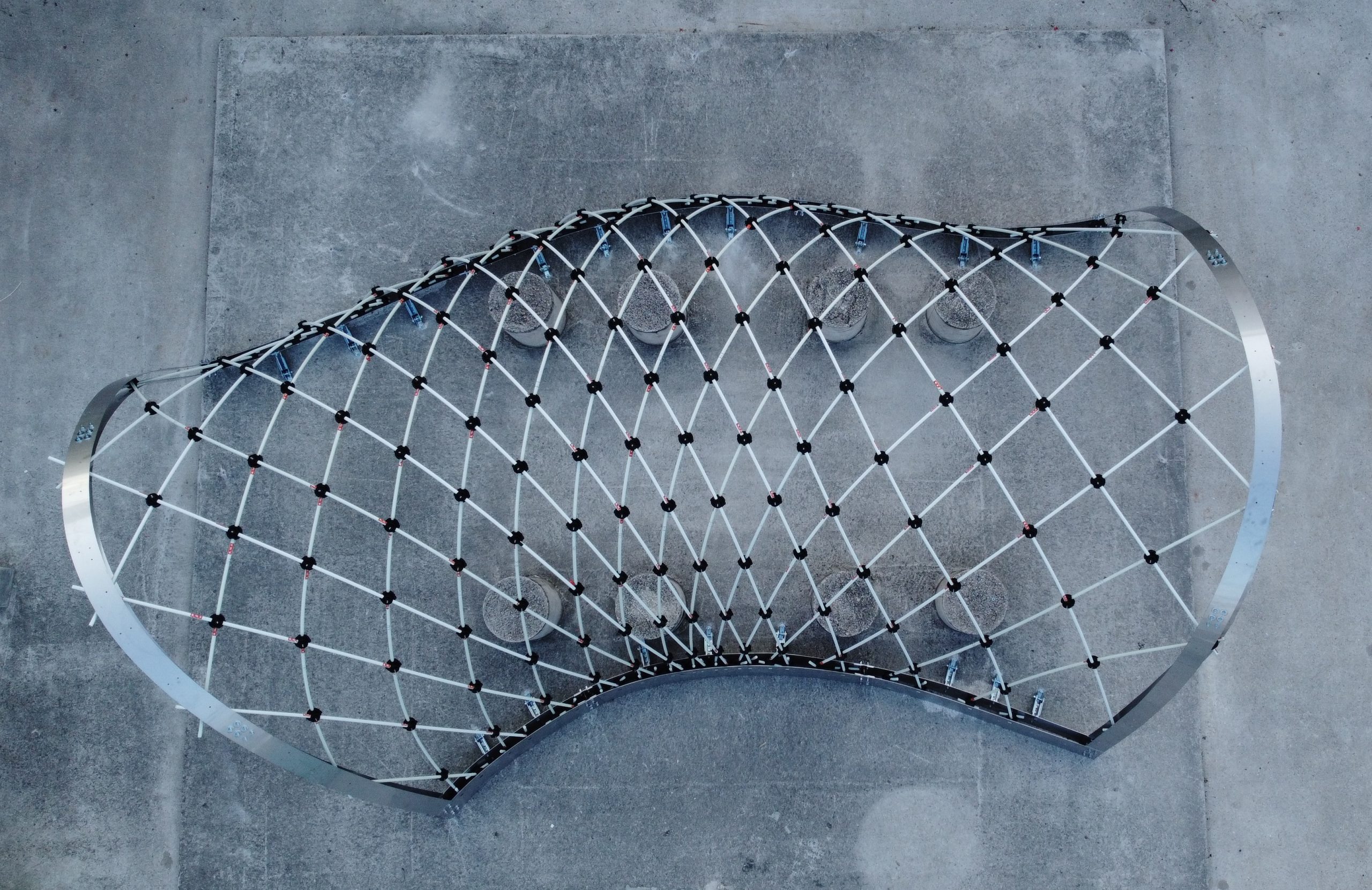
@ENPC – March. 2021 – S. Vedhachalam
GFRP gridshells are efficient structures which can span over large enclosures and require little skill to assemble. This prototype (fig.1)is part of a research project that aims at using gridshells as lightweight formworks for ultra-thin concrete shells. The main benefit expected from this method is a more flexible design space than with other lightweight formworks, like cable nets, which are restricted to negative curvature, and bring unbalanced forces at the free edges. Dual objective of the gridshell in the hybrid structure is to act as an structural formwork during concreting process and to increase the mechanical efficiency of the structure in case of superimposed or accidental loads.
Facts and figures
The project is sponsored and industrial collaboration provided by LafargeHolcim Ltd.
- Dimensions: 6.5 x 6 x 2.3 m
- Material: Stainless Steel edges, GFRP rods, Wire Mesh, Concrete
- Overall weight : 1440 kg
- Gridshell weight : 120 kg
- Shell surface area: 31 m2
- Number of intersecting Nodes: 143
- Time for Grid assembly : 1 day x 5 people
- Student: S. Vedhachalam
- Lab. Navier: R.Mesnil, O. Baverel , J.F. Caron, C. Douthe
- List of partners (indus. & acad.): Navier, LafargeHolcim, Design by DATA, Build-in, Wurth, Urban Canope, Xeometry
Description of design strategy
The Double curve shell structure was developed starting with generation of the supercanal surface, a way to generate surface from two planar lines of curvature (Romain et al 2018). A non- Chebyshev grid pattern was generated and optimized with an angle parameter for maximum grid stiffness. The thin layer of concrete was sprayed on top of mesh using the gridshell as the formwork.
To achieve the hybrid structural behaviour between the Grid and Concrete shell structure a special connection system was developed. Further to reduce the deformation during concrete spraying the sequencing patterns was generated in accordance to evolution of the stiffness of concrete during the early stage.









